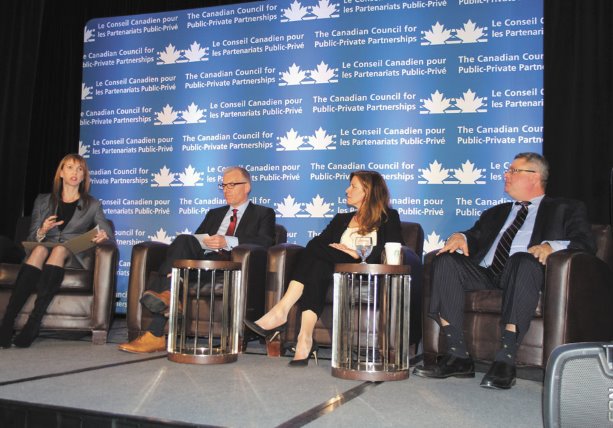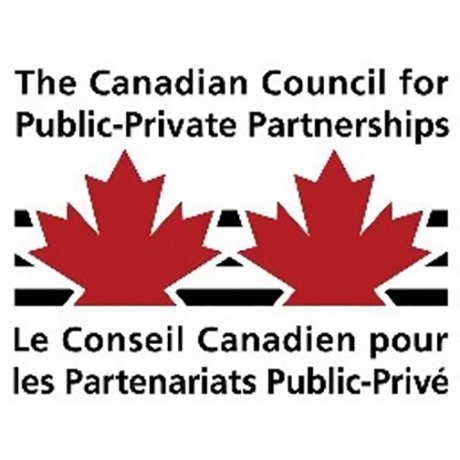The key to winning public support in public-private partnership (P3) projects boils down to just one thing: communication.
That was the consensus among the panel of experts who discussed the topic as part of P3 Fundamentals, a one-day session on the basics of the P3 process hosted by the Canadian Council for Public-Private Partnerships in conjunction with its national conference Nov. 14 in Toronto.
The panel, moderated by Sarah Borg Olivier, senior vice-president of InstarAGF, included John McKendrick, executive vice-president, project delivery — social, with Infrastructure Ontario (IO); David Caplan, former minister of infrastructure renewal and vice-chairman of Global Public Affairs; and Deborah Wilson, vice-president of communications and public affairs with PortsToronto.
Borg Olivier told attendees that ongoing communication is important in P3 projects and the question of how to win support is more important today than ever before.
"Winning support, to me, is the secret sauce, the thing that’s hard to get right and one of those areas where people often don’t have a sense of where to begin and how it all comes together," said Borg Olivier.
McKendrick said it’s important to educate and explain the benefits of the approach and to dispel myths. One of the biggest myths is that P3s cost more because of the cost of financing, but he said P3s can be more cost effective than traditional projects. Another myth is that P3s mean privatization, however, the public sector owns the asset and controls the services through a service-based agreement.
While Wilson’s expertise is in communications, she has been working on P3 projects for the past few years. She explained that beginning community engagement as early as possible and having a clear idea of the project’s objectives are two important lessons.
"Be very clear when you embark on a P3 project, or any infrastructure project for that matter, what your objectives are for the community," said Wilson. "Really understand how much you’re going to engage, how much you’re going to give back, how much you’re going to listen, how much you’re going to consult and ultimately what does success look like. And then, to the degree that you can, have those goals and objectives written into the project agreement."
Caplan was appointed Ontario’s minister of infrastructure renewal in 2003. One of the first things he tackled in that role was understanding the size of the infrastructure deficit. According to Caplan, at the time the deficit was estimated at more than $100 billion.
"We were going to have to use some innovative ways and means to improve, modernize and maintain our current infrastructure," he explained. "One of the tools we wanted to use is something that had been used in Britain and Australia called public-private partnerships." A survey taken around that time indicated Ontario had the lowest level of support for private sector involvement in public infrastructure in the country.
"I was blown away," said Caplan, adding it might have had something to do with the construction of Highway 407.
"I think people’s perceptions were quite clouded by that. The perception that this is privatization, that it is more expensive, that there are reasons for doing it to finance it out of public sight. These are all myths that we had to explode, but essentially what we had to do was rebuild and win the support of the public to allow us the provision to go ahead to use some of the innovative means and ways to do it."
The ministry decided to explain the benefits of the model, calling it Alternative Financing and Procurement. They discussed infrastructure needs with other ministries and then moved to outside stakeholders and the public.
"So the conversations were not just we’re going to get that road, or that hospital, or that water system, or that courthouse or whatever the piece of infrastructure was, but that we were going to do it on time and on budget," said Caplan.
McKendrick said IO had a lot of conversations with people and brought in the private sector and experts in the field to help provide credibility in the process and gain people’s trust.
"Ultimately, it’s not cranes and machinery that build infrastructure, it’s people that build infrastructure so you’ve got to get the right people in," said McKendrick.
"You need that credibility because you’re going to have to convince these people that you are going to look out for their interests, you have to brief them, meet with them, take them through the process."
One of the big things is battling the privatization myth, he said.
"You’re still going to pay with your health card, not your credit card," explained McKendrick. "Your health care is still going to be free we’re just having the private sector build it in a different way."
Social media has also changed the communications and public consultation process and has made it necessary to engage the community from the start.
"It’s amazing the impact social media has had in terms of giving people a voice who wouldn’t have had a voice otherwise and had to rely on a journalist to tell the story — now anyone can tell the story," Wilson said. "And if they do it in a provocative enough way, it’s amazing the traction they can get."
The opportunity of it, she said, is to engage the people on social media which is not always easy to do in 140 characters, as Twitter seems to be the battleground for most of these types of debates.
Social media is a powerful tool and it continues to evolve, Caplan added.
"We’ve only begun to scratch the surface," said Caplan.
"We are only just discovering what it can do and the effect that it can have. This is something that is here to stay and it’s going to evolve into a greater force."

Winning support was the topic of one of the panel discussions at the P3 Fundamentals session, part of the Canadian Council for Public-Private Partnerships national conference held Nov. 14 and 15 in Toronto. The panel included (from left) moderator Sarah Borg Olivier, senior vice-president of InstarAGF; John McKendrick, executive vice-president, project delivery — social, Infrastructure Ontario (IO); Deborah Wilson, vice-president, communications and public affairs, PortsToronto; and David Caplan, former minister of infrastructure and vice-chairman of Global Public Affairs.
Photo: ANGELA GISMONDI"










Recent Comments
comments for this post are closed